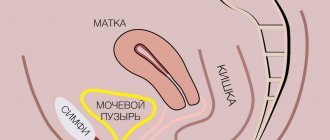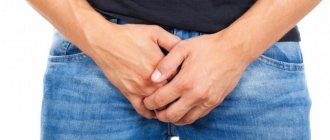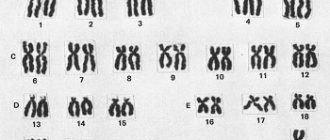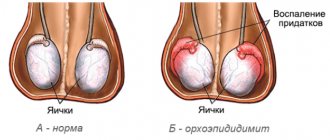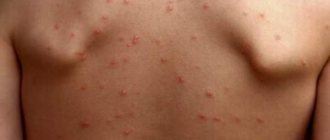March 9, 2021
Malformations of the penis have a negative impact on the delivery of sperm, the ability to perform sexual intercourse, or direct the flow of urine while standing. Due to the changed appearance of the genitals, men often experience a decrease in self-esteem and self-confidence. In rare cases, the genitals are not clearly male or female. Many of these pathologies require surgical intervention.
Why does pain occur in the penis?
Injuries and foreign bodies
The following traumatic injuries can cause pain:
- Injury.
In mild cases, the pain subsides after 10-15 minutes. When the tunica albuginea is torn, the pain syndrome is prolonged, combined with swelling, bluish-purple coloration of the skin of the penis, and difficulty walking and urinating. - Infringement.
The pain is increasing, aching, bursting. The disappearance of sensitivity while the blood supply continues to be impaired indicates tissue necrosis. - Dislocation.
Caused by rupture of the ligaments that fix the penis to the pelvic bones. It is characterized by extremely sharp pain at the base of the penis, displacement of the cavernous bodies under the skin of the thigh, scrotum or perineum. - Fracture.
Occurs during rough sexual intercourse. Accompanied by a sound reminiscent of the crunch of broken glass. The pain is acute, very intense, quickly intensifying until a state of shock develops. They are supplemented by deformation, hematoma formation, and increasing swelling of the organ.
A foreign body in the urethra causes pain in the urethra. When inflammation occurs, pain spreads to the tissues of the penis, perineum, and intensifies when urinating.
A special type of post-traumatic deformation resulting from contact with a foreign body are oleogranulomas - dense tumor-like formations at the site of injection of oily substances or foreign objects under the skin of the penis. Soreness appears some time after the formation of the tuberosity and is combined with lymphedema and erectile dysfunction.
Inflammatory diseases
Inflammation is caused by nonspecific or specific (including the causative agents of tuberculosis and syphilis) microorganisms, and becomes a consequence of hygiene violations, medical manipulations, and certain characteristics of sexual behavior. Manifests itself in the following forms:
- Balanitis.
The head turns red, swells, and becomes covered in rashes. The pain in the acute form is intense, in the chronic form it is aching and nagging. They intensify against the background of the formation of erosions. Combined with itching, burning, and urination problems. - Balanoposthitis.
Inflammation covers the head and prepuce. Discharge accumulates in the preputial sac. The mobility of the foreskin is limited due to swelling and infiltration. With balanoposthitis in young boys, general symptoms are expressed: weakness, hyperthermia, poor sleep and appetite. - Cavernite.
Due to inflammation of the corpora cavernosa, sharp pain appears in the shaft area, almost constant spontaneous erection, febrile fever, and symptoms of intoxication. A painful infiltrate is determined by palpation, which is then opened into the lumen of the urethra with an improvement in the patient’s condition. In the chronic form, the pain is mild and increases during erection. - Urethritis.
Soreness is noted around the urethra. Mainly, it bothers you during urination. Mucous or purulent mucous discharge can provoke inflammation of the surrounding skin, sometimes with the development of balanitis.
Pain in the penis
Gangrene
It is formed against the background of infected wounds, vascular disorders, immunosuppression, and severe somatic diseases. The nature of the pain syndrome is determined by the type of gangrene:
- Dry gangrene.
Develops gradually. Initially, severe pain is combined with paleness and a decrease in the size of the distal part of the penis. Then an area of necrosis forms, pain continues due to the long-term preservation of nerve cells and compression of the nerves by edema in the demarcation zone. General condition is satisfactory. - Wet gangrene.
Occurs acutely. The pain is intense, increases quickly, then decreases after tissue breakdown. They are supplemented by severe intoxication, weakness, drop in blood pressure, and severe hyperthermia.
A special type of pathology is Fournier’s gangrene, in which necrosis affects not only the penis, but also the scrotum. It occurs like wet gangrene. Initially, weakness and fever are observed. Then swelling and hyperemia of the penis and scrotum appear. The pain increases, then disappears after necrosis of the genital organs.
Phimosis and paraphimosis
With phimosis, pain in the head of the penis occurs mainly during sexual intercourse. Sometimes it becomes a result of skin irritation or trauma when trying to open the head. Pinching of the head with the development of paraphimosis is accompanied by swelling, cyanosis, sharp pain, intensifying at the slightest touch. To reduce pain, the patient spreads his legs wide and leans his body forward.
Fibrosis and sclerosis of tissues
In patients with Peyronie's disease, pain occurs at the stage of plaque formation and intensifies during erection. After the final formation of the area of fibromatosis (after 8-12 months), the pain syndrome significantly decreases or disappears. In patients with xerotic balanitis, pain is caused by the opening of hemorrhagic vesicles and concomitant inflammation of the head. With an erection, the symptom intensifies due to phimosis.
Priapism
Pain syndrome is observed in men suffering from an ischemic form of priapism caused by impaired blood outflow through the penile veins. Pain occurs in the proximal part of the penis, spreads to the perineum, and is supplemented by swelling and congestive hyperemia of the penis. In the non-ischemic form of priapism, a pathological erection also persists for a long time, but there is no pain.
Vascular damage
Phlebitis of the penis forms acutely against the background of wounds, infectious diseases, and is accompanied by sharp pain, swelling, tenderness and tension of the saphenous veins during palpation. Chronic pain syndrome is characteristic of diseases with damage to the arteries of the penis. The pain is aching, constant, and can be complicated by the formation of erosions and trophic ulcers, and gangrene of the penis. Identified in endarteritis and atherosclerosis. May be observed in patients with diabetes mellitus.
Tumors
In Queyre's disease, the lesion is localized on the head, more often on the inner layer of the foreskin. The pain is insignificant, intensifies with accidental injury or infection. Patients with penile cancer complain of the presence of a tumor-like formation or ulcer on the glans, sometimes on the foreskin, and extremely rarely on the shaft. The pain is initially mild or moderate and intensifies during urination. They increase with infection, strangulation of the head against the background of developed phimosis, and the development of lymphangitis.
STI
For patients with sexually transmitted infections, pain and cramps are mainly bothered during urination and are localized along the urethra, in the area of the head around its external opening. May be observed in the following diseases:
- gonorrhea;
- mycoplasmosis;
- ureaplasmosis;
- trichomoniasis;
- chlamydia;
- candidiasis;
- genital herpes.
The pain syndrome intensifies and becomes constant as inflammation spreads to the head with the development of balanoposthitis or balanitis. Discharge from the urethra is typical.
Individual characteristics
In patients with a short frenulum of the foreskin, the symptom appears during an erection and is caused by excessive tension in the skin fold. Intensifies during sexual intercourse, injury to the frenulum during active frictions. Another feature that causes pain during sexual intercourse is increased sensitivity of the head. In this case, sexual intercourse itself is painless, unpleasant sensations are noted at the moment of ejaculation.
Other reasons
The symptom is sometimes observed in autoimmune diseases and parasitosis, or appears due to irradiation during pathological processes in neighboring organs. Reiter's disease in the initial stages manifests itself as urethritis, and subsequently develops balanitis or balanoposthitis. Dermatobiasis is typically characterized by the formation of a painful ulcer on the head of the penis. Radiating pain in the penile area is detected with the following pathologies:
- renal colic, including that caused by stones in the ureter;
- bladder stones;
- acute and chronic prostatitis;
- colliculitis;
- cystitis in men;
- cooperitis with the spread of inflammation to the surrounding tissue.
Consultation with a urologist
Diagnostics
A urologist-andrologist determines the nature of the pathology. The doctor collects anamnesis, establishes when and under what circumstances the pain syndrome appeared, what other symptoms it was accompanied by, and how the disease developed. Important information is the presence of injuries, unprotected sexual intercourse, the use of spermicides, the connection of pain with erection, rough sexual intercourse, homosexual contact, attempts to prolong an erection using improvised means. The examination program includes the following diagnostic measures:
- Visual inspection
. The specialist evaluates the appearance of the external genitalia, identifies deformations, swelling, discoloration, tumor-like formations, examines the sensitivity of the penis, and palpates the inguinal lymph nodes. - Ultrasound of the penis.
Informative for hematomas, Peyronie's disease, tumors, inflammatory processes. It can be performed separately or in combination with ultrasound examination of blood vessels. Detects foci of fibrosis, tumor-like formations, thickening of the tunica albuginea, changes in the lumen of blood vessels, signs of atherosclerosis of the arteries, and vein thrombosis. - MRI of the penis.
It is carried out in diagnostically difficult cases when cancer or penile fracture is suspected. To increase information content, it can be performed using a contrast agent. - Lab tests
. In case of an inflammatory process, smear microscopy is performed; in case of leukocytosis, PCR, RIF, ELISA, and microbiological examination are prescribed. For patients with space-occupying formations and fibrous changes, a histological examination of the biopsy specimen is indicated.
Complications
Although this disease is not life-threatening, if left untreated it can lead to sexual dissatisfaction, painful erections and irreversible functional impairment.
The course of the disease is also complicated by the danger of psychotraumatization of patients who are seriously experiencing their “illness.”
With a small percentage of penis deviation, this cannot yet be called a disease. Peyronie's disease is accompanied by a significant increase in fibrous tissue, leading to the formation of compactions - this can ultimately lead to the inability to perform sexual intercourse (dysfunction).
Treatment
Conservative therapy
Some conditions require emergency medical attention. Patients with paraphimosis apply cold to the pinched area, apply a bandage with a hypertonic solution and local anesthetics, and inject hyaluronidase. After pain and swelling have decreased, the paraphimosis is reduced. For persistent priapism, hirudotherapy is performed on the root of the penis, and a presacral or perirenal block is performed. In case of ineffectiveness, puncture of the cavernous bodies is performed.
The following medications are used to treat diseases accompanied by pain in the penis:
- Analgesics
. Recommended for reducing pain in traumatic injuries and gangrene of the penis. They are not the basis of treatment; they are prescribed simultaneously with measures to correct the underlying pathology. - Antibiotics
. Necessary for injuries, gangrene, inflammatory processes caused by bacterial microflora, and the addition of a secondary infection. At the initial stage, broad-spectrum medications are used; after receiving culture results, the drug is replaced taking into account the sensitivity of the pathogen. - Antifungal and antiviral
. Indicated for inflammation of fungal and viral etiology. They are used in the form of tablets, topical agents: sprays, ointments, creams. - Corticosteroids
. Effective for inflammatory processes accompanied by itching in the genital area. Long-term application of hormonal ointments to the prepuce and glans helps to increase tissue elasticity, reduce swelling and inflammation.
For some pathologies, irrigation with antiseptics, baths with herbal decoctions, and physiotherapeutic procedures are useful. Peyronie's disease requires complex therapy, including vitamin E, tamoxifen, pentoxifylline, other general medications, local agents, injections into the plaque, and physiotherapeutic procedures.
Prevention
Disease prevention measures are designed mainly for men over 35, but young people should also adhere to them, especially if there is a hereditary predisposition.
First, you need to eliminate all risk factors, such as injuries during sex. Choose only comfortable positions and do not make love after drinking alcohol or drugs. Wear comfortable underwear that does not compress the genitals.
Since some systemic diseases, such as diabetes mellitus, can provoke Peyronie's disease, they need to be treated promptly.


